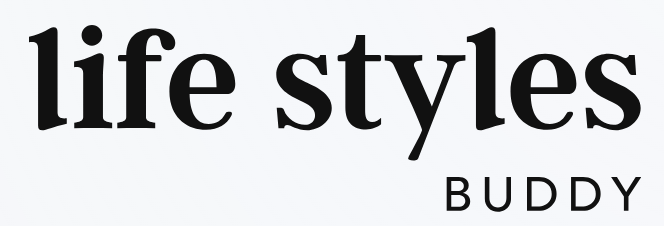What to Keep, Donate, and Toss: A Practical Guide to Decluttering Your Space
Introduction
Decluttering your home or workspace can be an overwhelming task, but knowing what to keep, donate, or toss can make the process much more manageable. Organizing your belongings not only creates a cleaner environment but also improves productivity and mental well-being. If you’re looking to downsize, refresh your space, or simply make room for new items, this guide will help you make informed decisions.
By implementing an effective decluttering strategy, you can optimize your space while also benefiting others through donations. This article will explore best practices for deciding what stays and what goes, as well as practical ways to organize your home efficiently.
The Benefits of Decluttering
Before diving into the specifics of what to keep, donate, and toss, it’s essential to understand the benefits of decluttering. Some of these include:
- Improved Mental Clarity: A clutter-free space reduces stress and promotes a sense of peace.
- Enhanced Productivity: Organizing your environment helps you focus and find things easily.
- Increased Storage Space: Removing unnecessary items frees up room for essential belongings.
- Helping Others: Donating items in good condition can benefit those in need.
- A Cleaner Home: Fewer items mean less dust and an easier cleaning routine.
Now, let’s break down what to keep, donate, and toss.
What to Keep
While decluttering, it’s crucial to distinguish between sentimental items and items that serve a practical purpose. Here’s a guideline on what to keep:
1. Essentials
- Items you use daily, such as kitchen tools, toiletries, and clothing.
- Important documents like passports, tax records, and insurance policies.
- Medical supplies and prescription medications.
2. Sentimental Items
- Family heirlooms, photo albums, and meaningful gifts.
- Unique collectibles that hold sentimental or monetary value.
- Handwritten letters or journals with emotional significance.
3. Functional and Multi-Purpose Items
- Tools that serve multiple functions (e.g., a Swiss Army knife, a multi-purpose blender).
- High-quality cookware, furniture, and electronics that enhance daily life.
- Durable clothing and accessories that fit well and are in good condition.
If an item is frequently used, serves a necessary function, or has deep sentimental value, it should be kept.
What to Donate
Donating items that are still in good condition but no longer serve you is a great way to give back to the community. Consider donating:
1. Clothing and Accessories
- Gently worn clothes that no longer fit or suit your style.
- Shoes, handbags, and accessories in good condition.
- Winter gear, such as coats, scarves, and gloves, for those in need.
2. Furniture and Household Items
- Functional furniture pieces that don’t fit your space or aesthetic.
- Kitchen appliances and utensils that are still usable.
- Home décor, such as lamps, artwork, and rugs, that others might appreciate.
3. Electronics and Gadgets
- Working phones, tablets, and laptops that you’ve upgraded.
- Gaming consoles and accessories you no longer use.
- Cameras, chargers, and cables that others might find helpful.
4. Books, Toys, and Games
- Books that you’ve already read and don’t plan on re-reading.
- Children’s toys and stuffed animals in good condition.
- Board games and puzzles that can be enjoyed by others.
Check with local charities, thrift stores, or shelters to see if they accept donations. Many organizations offer free pickup services for large items.
What to Toss
Some items are simply not worth keeping or donating due to wear and tear, safety concerns, or obsolescence. These should be responsibly discarded:
1. Expired or Broken Items
- Expired medications, food, and beauty products.
- Damaged kitchenware, such as chipped plates and non-stick pans with peeling coatings.
- Broken appliances, electronics, and devices that are beyond repair.
2. Outdated Paperwork
- Old magazines, newspapers, and junk mail.
- Expired warranties and irrelevant receipts.
- Shred personal documents that contain sensitive information.
3. Single-Use or Duplicate Items
- Excess plastic containers, mismatched lids, and unnecessary utensils.
- Duplicate items that serve the same purpose (e.g., multiple coffee makers).
- Promotional items like branded tote bags and outdated calendars.
4. Worn-Out Clothing and Linens
- Clothes with holes, stains, or excessive wear.
- Old bedding, towels, and pillows that have lost their shape and softness.
- Shoes with broken soles or irreparable damage.
When tossing items, consider responsible disposal methods such as recycling or hazardous waste collection programs.
Tips for an Effective Decluttering Process
Decluttering doesn’t have to be an overwhelming task. Follow these tips to make the process smoother:
1. Use the 80/20 Rule
Most people use only 20% of their belongings 80% of the time. Focus on keeping items that fall into this category.
2. Set a Decluttering Schedule
Declutter room by room instead of tackling everything at once. Set aside time each week for small tasks.
3. Use the Four-Box Method
Label four boxes: Keep, Donate, Toss, and Store. Sort items accordingly as you go.
4. Be Honest with Yourself
If you haven’t used an item in over a year, it’s likely time to let it go.
5. Digitize When Possible
Scan important documents, photos, and sentimental letters to reduce paper clutter.
6. Organize as You Declutter
Once you’ve decided what to keep, create an organizational system to maintain order and prevent future clutter buildup.
Conclusion
Decluttering your home is a transformative process that brings clarity, efficiency, and peace of mind. By determining what to keep, donate, and toss, you can create a functional and inviting space. Donating usable items benefits others, while properly disposing of unnecessary clutter enhances your living environment.
A well-organized home fosters productivity and relaxation, making it easier to find what you need and enjoy your space. Start small, stay consistent, and embrace the process—your future self will thank you!
If you found this guide helpful, share it with friends and family looking to simplify their spaces. Happy decluttering!


